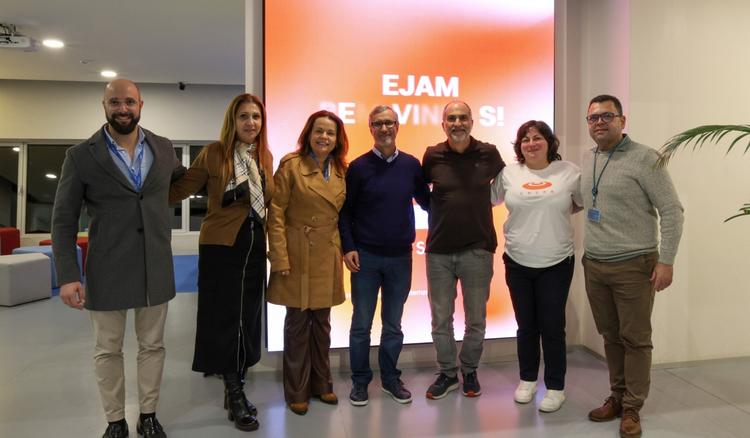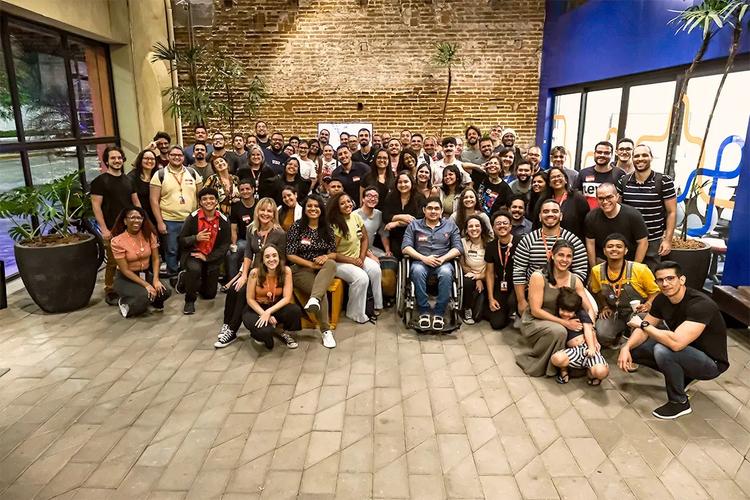6 mins to read
CESAR .
Publicado em: 06 de junho de 2023
Generative A.I.’s Disruptive Impact Is Here

This is not your “Granddaddy’s A.I.” Brace for a deep impact on how we live, learn, create, and work in the future. And it’s all still very much a fluid work in progress.
Realizing that this next wave of generative A.I. was different from previous ones with the potential to upend how we live, work and educate people, Geber Ramalho, who serves as Extraordinary Professor and Board Advisor at CESAR, was instrumental in gathering together the best minds in Brazil to focus on applied A.I. research. PRAIA, a consortium of 15 Brazilian institutions that form a network of leading A.I. researchers with more than 150 PhDs, aims to speed up research on the consequences of this technological revolution.
“We began PRAIA – which means “beach” in Portuguese as the Port of Recife is reminiscent of other ocean-side innovation centers such as Los Angeles and Miami – during the pandemic in an effort to gather intelligence and financial support from the government and private sector focused on the impact of A.I. on education and work,” said Ramalho. “We realized there would be a sea change as a result of rapid A.I. advancements – and this will require us to re-educate people for new kinds of jobs to ensure we’re able to get them back into the labor force again with different skill sets.”

Geber Ramalho, Extraordinary Professor and Board Advisor at CESAR, orchestrated the creation of PRAIA, a consortium of A.I. experts from 15 institutions to research how to address GenA.I.’s disruption of the status quo.
“Through our research at PRAIA, we’re examining the adoption of new GenA.I. tools in education – but more importantly, we are rethinking the pedagogy, and what are the new roles of the teacher and the students in this brave new world,” said Ramalho. “For example, educators around the world have voiced their concerns about ChatGPT’s ability to write essays for students – even though it could be considered the new way to conduct an internet search. One new way of teaching critical thinking is letting ChatGPT generate text about a topic, say the U.S. Civil War, and then ask the students to write a piece that either criticizes or agrees with the positions via ChatGPT and explain why.”
Ramalho and others at CESAR and PRAIA consider the examination of how GenA.I. will disrupt how we live, teach, work, entertain ourselves, and design things – including software code – and how we need to adapt to be a top priority. Due to how much coding CESAR outputs, it’s an important institution to use, test, and identify the limitations and the possibilities of GenA.I. On the flip side, there’s also a strong focus on how this new technology can be used to educate people and prepare them for different jobs within GenA.I.-powered workplaces that are already quickly emerging around us.
Ramalho, who earned his Master of Science in A.I. in 1989, more than three decades ago, believes “we are now in a completely different era, an inflection point. These large language models and new GenA.I. capabilities are an entirely different thing,” he said.
For instance, Geber compares the style of teaching we had fifty years ago in the 1970s as a time when the educators were the ones who had access to all the content. The students in that era had limited resources when it came to learning something outside the classroom. “We are in a different world today,” said Ramalho. “My students have a myriad of sources of knowledge to choose from. They can even access courses in different languages on the internet, or now, with what ChatGPT retrieves for them.”
When teaching courses on software coding or technology design, Ramalho emphasizes the importance of not only boosting people’s technical skills, but also the “soft” skills of critical thinking, fact checking, and not automatically trusting GenA.I. tools and what they find on the internet and serve up as being truthful. Beyond the need for training more prompt engineers – which is one of the hottest new job roles as a result of GenA.I. – there’s a need to train both younger students and experienced pros to be more conscious and critical.
As an example, Ramalho recounts a recent request of ChatGPT to provide him with good references for a domain he was researching, and in this instance, the GenA.I. invented a research paper that did not exist and served it up to him as a factual piece. This is known in the industry as a chatbot having a “hallucination” – in which it makes up something on its own without relying on reliable sources like a journalist is trained to do.
Ramalho and others who are longtime industry players caution against absolute trust in GenA.I. Instead, they view it as worthy of a dialogue between a smart machine and a human – and a way to co-create new outputs, whether it be accelerated research, faster productivity for coders, or machine-augmented creativity that lets nearly anyone co-create content, imagery, art, music, designs, scientific breakthroughs and more.
“The new frontier of design is having both humans and machines create things together, have a dialogue about it, and then further refine or iterate it,” said Ramalho.
Of course, there are challenges to be confronted in this brave new world, according to Ramalho. There is the impact of people losing their old jobs to machines and automation, and a need to retrain people for the new jobs of the future. There’s still the issue of human bias being built into algorithms that are now known to perpetuate misinformation – which requires humans to be part of the decision-making loop.
From a broader societal perspective, there are major ethical issues to contend with – including the use of GenA.I. in making decisions about people’s job applications, legal or court proceedings, healthcare, public safety and more. In the end, it’s likely never a great idea for mankind to give up autonomy to machines to make such important decisions for us, according to Ramalho.
You may also like

Acordo entre CESAR Europa e o CCG/ZGDV, centro português amplia cooperação tecnológica entre Brasil e União Europeia

Web Summit Lisboa: CESAR e Porto Digital exaltam o papel do ecossistema lusófono no cenário digital global

CESAR é finalista em dobro no Prêmio Brasileiro de Design 2025

